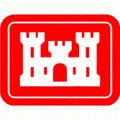U.S. Department of Defense
Date of this Version
2011
Abstract
This Adaptive Management (AM) Report for Emergent Sandbar Habitat (ESH) represents the first complete iteration within the draft AM strategy being implemented for the interior least terns (Sternula antillarum) and piping plovers (Charadrius melodus) within the Missouri River Mainstem System based on the 2003 Amended Biological Opinion (BiOp). Please refer to the ESH AM Strategy - Appendix H of the Draft ESH Programmatic Environmental Impact Statement (PEIS) – and the Missouri River Recovery Program (MRRP) AM Process Framework for detailed background information on the overall scope and approach of this effort. Also note that as more information becomes available, corrections to values in tables and figures from past reports may be updated and certain methodologies may evolve in future AM Reports. In the future, the most recent AM Report should be referred to for the most up-to-date information. Following is a summary of data from the 2010 nesting season. A more complete tracking of progress towards metrics, as well as trends, can be found in the report card (Section 3.5).
Monitoring data from 2010 indicate that population sizes for both the plover and tern were below BiOp targets and decreased 33% and 5%, respectively, from 2009 levels (Table 3.1). Fledge ratios for plovers remained below target but increased slightly (7%) from 2009. Fledge ratios for terns were above target in 2010 and increased significantly (29%) from 2009. ESH area was below the target associated with Alternative 5 of the Draft ESH PEIS and is estimated to have declined 19% between 2009 and 2010. In addition there was also an overall decline in the amount of reservoir habitat due to increased water levels at all reservoirs.
During 2004–2010, the total amount of constructed ESH was approximately 847 acres, or an average construction rate of 169 acres/year in years where construction took place (Table 4.1). Construction of new ESH for the 2010 nesting season amounted to approximately 104 acres and was below the target associated with Alterative 5 of the PEIS.
Based on available data and observations, a number of recommendations have been developed for upcoming years of implementing the ESH sub-program. Recommendations to directly influence effectiveness are:
1. Increase rate of ESH construction to at least 164 acres annually,
2. Utilize vegetation removal methods from pilot project to improve habitat quality on previously constructed habitats annually,
3. Continue investigations to improve understanding of creation actions and system and species response.


Comments
Published in ESH Annual Adaptive Management Report (2011) 1-97